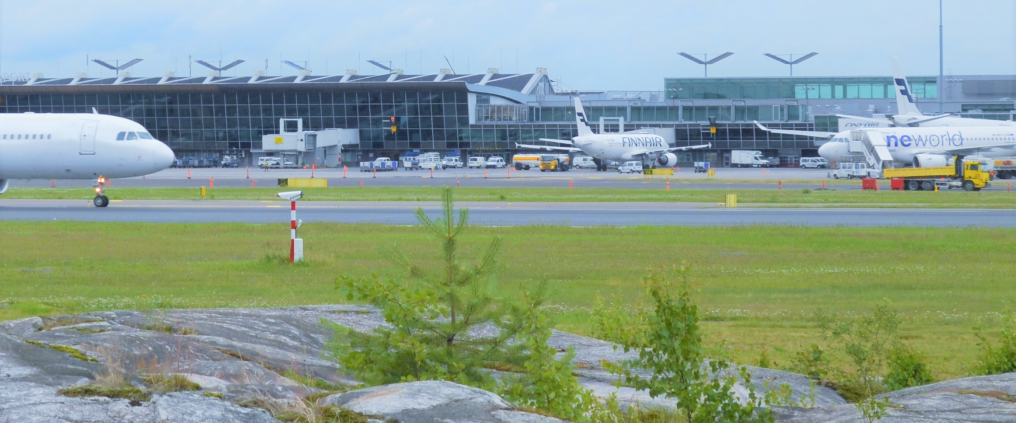“Water management is an important part of our environmental work, and we do our best to ensure good conditions for flora and fauna alike in nearby streams. The new underground wetland will improve the condition of the streams by improving the quality and oxygen balance of the water flowing to them,” says Mikko Viinikainen, Vice President, Sustainability & Environment at Finavia.
The underground wetland is a basin filled with gravel and sealed at the bottom, where the storm water that drains onto its surface is cleaned when it passes through the gravel layer. The cleaning is enhanced by the compressed air supplied from the bottom of the basin through the aeration system.
This is an exceptional structure and first of its kind at a Nordic airport.
“Quantitative and qualitative water management reduces the load on bodies of water and the erosion of streams caused by aircraft deicing and runway anti-skid agents,” says Finavia's Environmental Expert Tuija Hänninen.
Photo: The underground wetland filters water through the gravel and the biofilm that grows on the gravel.
“Storm water passes through the gravel into underdrains, and air bubbles from the aeration pipes below the underdrains oxidise the water. Aeration also prevents the wetland from freezing in winter. The layer growing on the treatment layer, in turn, acts as insulation in cold weather.
The surface area of the wetland is 3,200 square metres. The basin is built from 7,000 cubic metres of gravel. The aeration system of the wetland has a total of 150 metres of steel pipes, through which a fan feeds compressed air into the area at a rate of thousands of cubic metres per hour. In addition, there are hundreds of metres of sewer pipes and cables.
Similar wetlands have been tested at other airports around the world, such as Buffalo Niagara Airport and London Heathrow Airport.
“The activity of the wetland is monitored both continuously and with water samples analysed in a laboratory. Sensors continuously provide information on the wetland’s flow and oxygen concentrations, and this information is used to control the aeration of the wetland and water circulation speed,” Hänninen says.
The completion of the underground wetland at Helsinki Airport is a significant investment in improving the quality of bodies of water in the surrounding areas and in managing the quality of stormwater.
Read more
An underground water treatment system will help Helsinki Airport clean water more effectively




